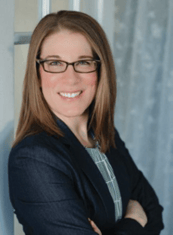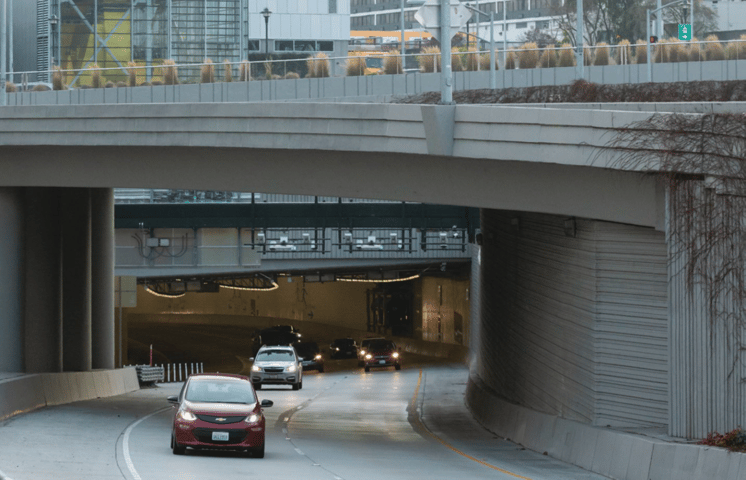Lisa Williams, Ametek Spectro Scientific’s technical solutions specialist discusses reliability and problem-solving strategies working with end-users.

STLE member Lisa Williams is a results-focused solution provider working in reliability engineering and tribology for the past 13 years. Specializing in lubricant analysis, she currently serves as a technical solutions specialist on the product management team at Ametek Spectro Scientific. She holds STLE’s Certified Lubrication Specialist™ (CLS) certification and also holds the Level I Machine Lubricant Analyst (MLA I) and Level II Laboratory Lubricant Analyst (LLA II) certifications with the International Council of Machinery Lubrication. She currently serves as vice chair of the ASTM D02.CS96 Committee for In-service Lubricant Testing and Practices and served as the technical lead on two ASTM standards for in-service grease sampling and analysis, ASTM D7718 and ASTM D7918. Williams holds a bachelor’s of science degree in chemistry from York College of Pennsylvania and a master’s of business administration from Elizabethtown College.
TLT: What prompted you to get into reliability and obtain your CLS certification?
Williams: In my junior year of college, I accepted an internship with an oil analysis lab. The concept of oil analysis was completely foreign to me, but I was working in a lab setting, using my chemistry degree and able to participate in some interesting projects, so I was satisfied. At that point, I really had no idea it would turn into a career. After I worked there a few months, I enjoyed what I was doing, and there was a lot of opportunity for growth. My boss, at the time, put me in all kinds of certification courses pertaining to oil analysis, root cause failure analysis, ferrography and machine design.
From there, I started earning my certifications and working on higher-profile projects. I appreciated the analytical aspect of the job, and I quickly learned no two projects were the same. Having that foundation of knowledge allowed me to take the data and ask the necessary questions I needed to draw reasonable conclusions and make strong recommendations. What I enjoyed (and still enjoy) is working with end-users to solve problems.
Nearly eight years into my career is when I decided to take the STLE CLS exam. My job at the time wasn’t requiring me to have my CLS, but I wanted to do it for my own professional development. I knew at that point tribology and lubricant analysis was my chosen profession, so I wanted to take the necessary steps to keep myself educated. While this was one of the more challenging exams I’ve ever taken, upon passing, I immediately started reaping the benefits of the certification. Having the CLS credential is helpful when interviewing for jobs, working on challenging projects or giving advice to colleagues. The CLS provides credibility to your recommendations.
TLT: Describe a typical day in your job.
Williams: My primary role is customer facing, as I assist our sales team in making the proper instrument recommendations to our end-users. From there, I shift gears and work with our support and field service teams on enhancing the end-user experience by helping users get the most out of their investment. I design and conduct instrument and software-specific training courses that help the user gain a deep understanding of all the instrument capabilities. Basically, help nurture the initial purchase and make sure the unit is being optimally used by the end-user. What I enjoyed (and still enjoy) is working with end-users to solve problems.
Again, no two cases are alike in these scenarios, so I have the opportunity to take the use-case the customer presents and provide the appropriate solution. On any given day, I’m likely interacting with every sector of our organization. I could be working on a product enhancement with our engineering team, and then an hour later showing a customer how to interpret the images on the LaserNet Fines. Having this versatility is satisfying. I’m confident that working more than 10 years in an oil analysis lab trained my mind to be versatile and tackle a variety of reliability issues on any given day.
As co-vice chair of ASTM D02.96 and co-chair of our upcoming CS96/Sub C joint lubricant symposium, ASTM also plays an important role in my daily activities. I work closely with our senior director of R&D to manage our standard development process. Standard management is extremely vital to our product development and must be kept up to date. Our team does a great job with this.
TLT: What are some of the challenges you have faced in your career?
Williams: A lot of the challenges I faced early on in my career had to do with a lack of confidence in my knowledge of tribology and lubrication. As I started to intentionally educate myself about these topics, create mentor relationships and participate in industry-specific events, I started to gain the confidence I needed to solve problems. Knowledge became a very powerful problem-solving tool for me. Currently, the biggest challenge for me is keeping up to date with how quickly our industry is evolving. While this is fantastic and exciting, I literally could read all day about new developments and products on the market. I constantly try to keep myself in check, finding the balance between doing my job and keeping up with the latest industry news. Neither can be ignored.
Generally, I think our industry needs to be more aware of educating young people about the opportunities in this field. I believe we’ve made strides with this in recent years, but too many engineers I speak with ended up being assigned the predictive maintenance role within their organization with little knowledge as to what that means. At the university level, I’d love to see students gain an understanding of tribology, reliability-centered maintenance, condition-based maintenance and predictive maintenance strategies so they can carry those ideas into their career. Let’s break the stigma that maintenance is something you are “stuck” doing, but rather is an opportunity to implement new ideas and technology. Companies can save a lot of money on maintenance if the right strategies are deployed.
TLT: What has been your most interesting field lubrication project?
Williams: I’ve gotten a chance to participate in a number of interesting projects. I’ve climbed windmills, been onboard Coast Guard ships, toured ice cream plants and paper mills—all of which were extremely valuable and helpful experiences. But the one project that sticks out the most is the construction of SR 99 Tunnel (Alaskan Way Viaduct replacement tunnel) in Seattle, Wash. This tunnel provides a direct route on SR 99 between the stadiums and the Space Needle. It is the largest double-deck highway tunnel of its kind in the country. During construction, my firm was hired to assist with the maintenance practices of the boring machine, “Big Bertha.” I was onsite for some of this project and had the opportunity to work on Bertha. Being under the city of Seattle, climbing on the largest tunnel boring machine in the world was a surreal experience.
 SR 99, in Seattle, is the largest double-deck highway tunnel of its kind in the country. During construction, Williams’ firm was hired to assist with the maintenance practices of the boring machine, “Big Bertha.” Williams was onsite for some of this project and had the opportunity to work on Bertha.
SR 99, in Seattle, is the largest double-deck highway tunnel of its kind in the country. During construction, Williams’ firm was hired to assist with the maintenance practices of the boring machine, “Big Bertha.” Williams was onsite for some of this project and had the opportunity to work on Bertha.
You can reach Lisa Williams at lisa.williams@ametek.com.
Reprinted with permission from the December 2020 issue of TLT, the official monthly magazine of the Society of Tribologists and Lubrication Engineers, an international not-for-profit professional society headquartered in Park Ridge, Ill., www.stle.org.
Click below to download the full Article


